Kun Qiu
DualAttWaveNet: Multiscale Attention Networks for Satellite Interference Detection
Apr 24, 2025Abstract:The escalating overlap between non-geostationary orbit (NGSO) and geostationary orbit (GSO) satellite frequency allocations necessitates accurate interference detection methods that address two pivotal technical gaps: computationally efficient signal analysis for real-time operation, and robust anomaly discrimination under varying interference patterns. Existing deep learning approaches employ encoder-decoder anomaly detectors that threshold input-output discrepancies for robustness. While the transformer-based TrID model achieves state-of-the-art performance (AUC: 0.8318, F1: 0.8321), its multi-head attention incurs prohibitive computation time, and its decoupled training of time-frequency models overlooks cross-domain dependencies. To overcome these problems, we propose DualAttWaveNet. A bidirectional attention fusion layer dynamically correlates time-domain samples using parameter-efficient cross-attention routing. A wavelet-regularized reconstruction loss enforces multi-scale consistency. We train the model on public dataset which consists of 48 hours of satellite signals. Experiments show that compared to TrID, DualAttWaveNet improves AUC by 12% and reduces inference time by 50% to 540ms per batch while maintaining F1-score.
Phase regeneration of QPSK signals based on Kerr soliton combs in a highly nonlinear optical fiber
Mar 27, 2023Abstract:We demonstrate an all-optical phase regeneration technique based on Kerr soliton combs, which can realize degraded quaternary phase shift keying (QPSK) signal regeneration through phase-sensitive amplification. A Kerr soliton comb is generated at the receiver side of optical communication systems based on a carrier recovery scheme and is used as coherent dual pumps to achieve phase regeneration. Our study will enhance the relay and reception performance of all-optical communication systems.
Traffic Analytics Development Kits (TADK): Enable Real-Time AI Inference in Networking Apps
Aug 16, 2022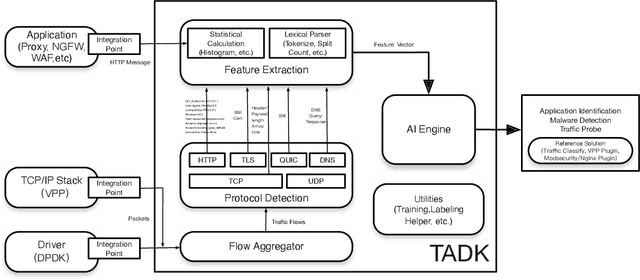
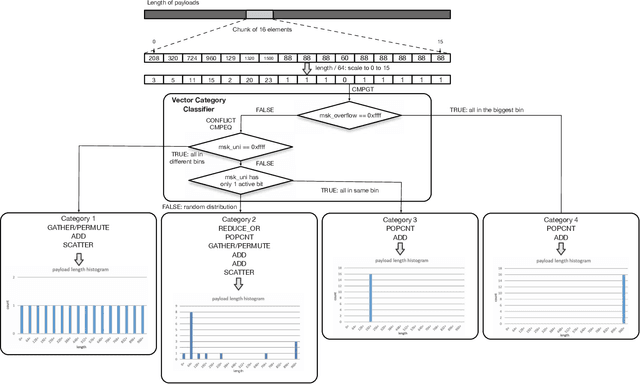
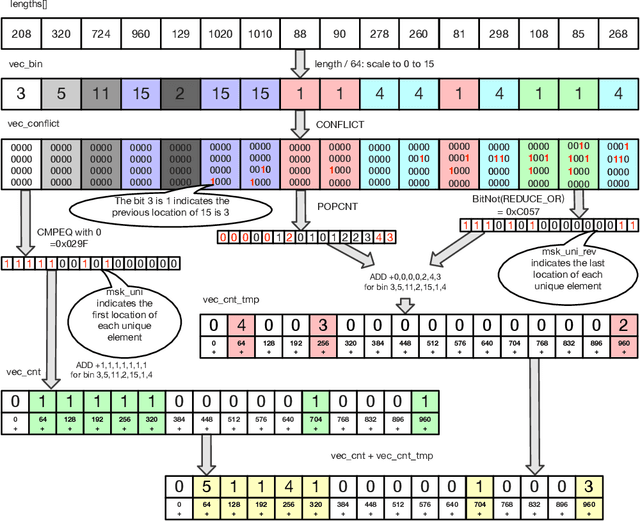
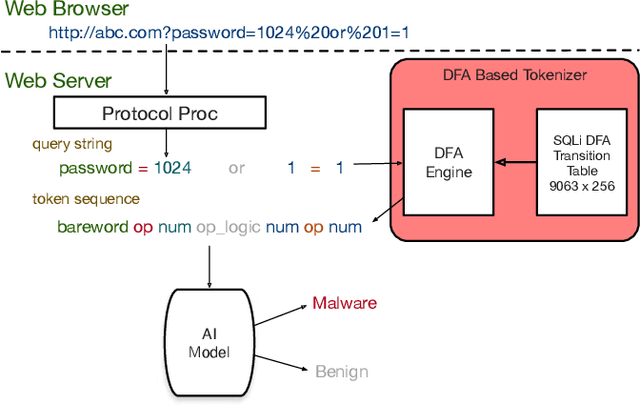
Abstract:Sophisticated traffic analytics, such as the encrypted traffic analytics and unknown malware detection, emphasizes the need for advanced methods to analyze the network traffic. Traditional methods of using fixed patterns, signature matching, and rules to detect known patterns in network traffic are being replaced with AI (Artificial Intelligence) driven algorithms. However, the absence of a high-performance AI networking-specific framework makes deploying real-time AI-based processing within networking workloads impossible. In this paper, we describe the design of Traffic Analytics Development Kits (TADK), an industry-standard framework specific for AI-based networking workloads processing. TADK can provide real-time AI-based networking workload processing in networking equipment from the data center out to the edge without the need for specialized hardware (e.g., GPUs, Neural Processing Unit, and so on). We have deployed TADK in commodity WAF and 5G UPF, and the evaluation result shows that TADK can achieve a throughput up to 35.3Gbps per core on traffic feature extraction, 6.5Gbps per core on traffic classification, and can decrease SQLi/XSS detection down to 4.5us per request with higher accuracy than fixed pattern solution.
Use of Metamorphic Relations as Knowledge Carriers to Train Deep Neural Networks
May 11, 2021Abstract:Training multiple-layered deep neural networks (DNNs) is difficult. The standard practice of using a large number of samples for training often does not improve the performance of a DNN to a satisfactory level. Thus, a systematic training approach is needed. To address this need, we introduce an innovative approach of using metamorphic relations (MRs) as "knowledge carriers" to train DNNs. Based on the concept of metamorphic testing and MRs (which play the role of a test oracle in software testing), we make use of the notion of metamorphic group of inputs as concrete instances of MRs (which are abstractions of knowledge) to train a DNN in a systematic and effective manner. To verify the viability of our training approach, we have conducted a preliminary experiment to compare the performance of two DNNs: one trained with MRs and the other trained without MRs. We found that the DNN trained with MRs has delivered a better performance, thereby confirming that our approach of using MRs as knowledge carriers to train DNNs is promising. More work and studies, however, are needed to solidify and leverage this approach to generate widespread impact on effective DNN training.
Coherent optical communications using coherence-cloned Kerr soliton microcombs
Jan 01, 2021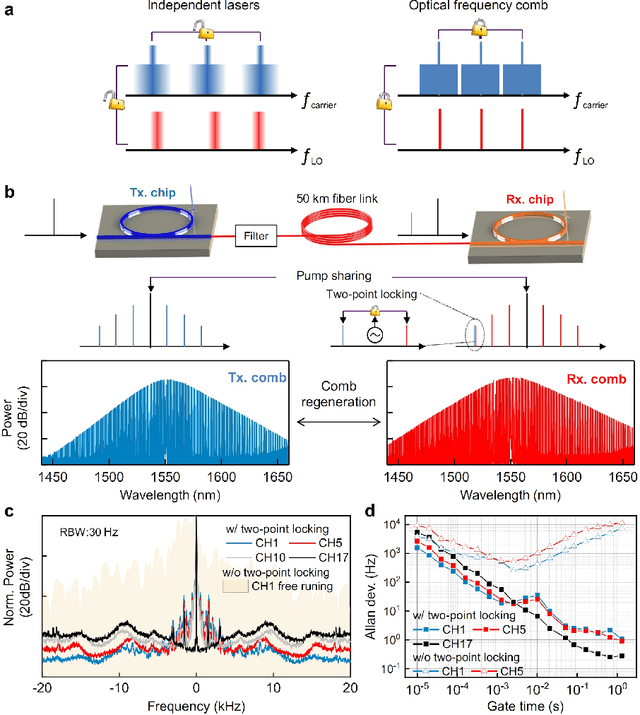
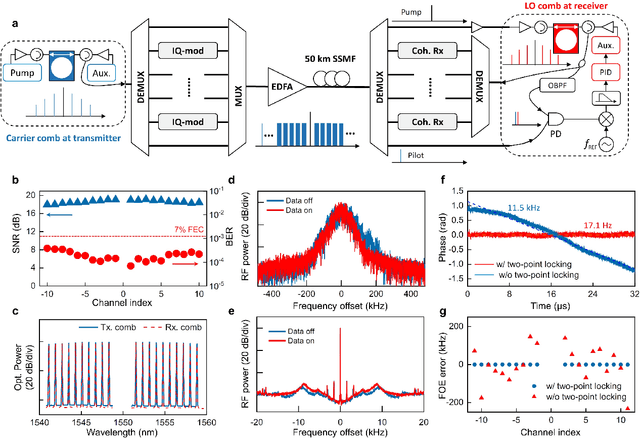

Abstract:Dissipative Kerr soliton microcomb has been recognized as a promising on-chip multi-wavelength laser source for fiber optical communications, as its comb lines possess frequency and phase stability far beyond independent lasers. In the scenarios of coherent optical transmission and interconnect, a highly beneficial but rarely explored target is to re-generate a Kerr soliton microcomb at the receiver side as local oscillators that conserve the frequency and phase property of the incoming data carriers, so that to enable coherent detection with minimized optical and electrical compensations. Here, by using the techniques of pump laser conveying and two-point locking, we implement re-generation of a Kerr soliton microcomb that faithfully clones the frequency and phase coherence of another microcomb sent from 50 km away. Moreover, leveraging the coherence-cloned soliton microcombs as carriers and local oscillators, we demonstrate terabit coherent data interconnect, wherein traditional digital processes for frequency offset estimation is totally dispensed with, and carrier phase estimation is substantially simplified via slowed-down phase estimation rate per channel and joint phase estimation among multiple channels. Our work reveals that, in addition to providing a multitude of laser tones, regulating the frequency and phase of Kerr soliton microcombs among transmitters and receivers can significantly improve coherent communication in terms of performance, power consumption, and simplicity.
Mask Iterative Hard Thresholding Algorithms for Sparse Image Reconstruction of Objects with Known Contour
Dec 02, 2011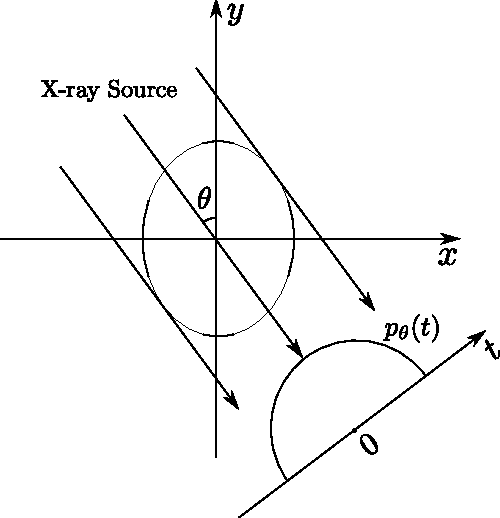
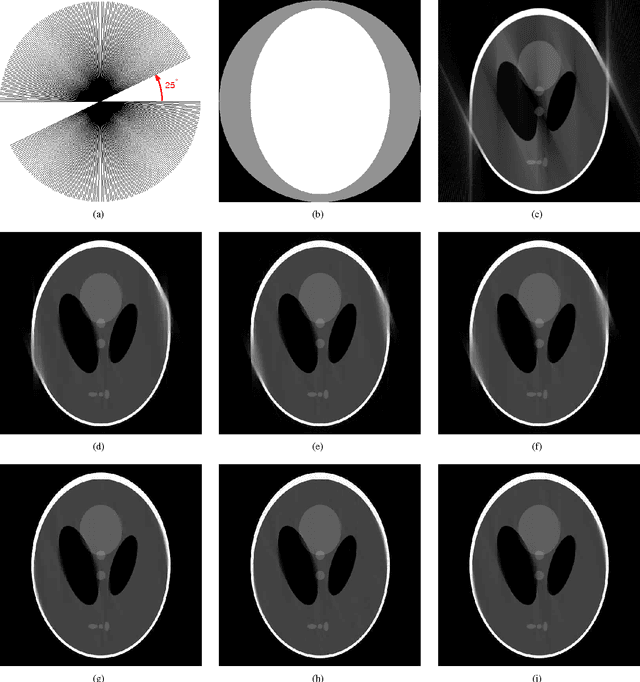
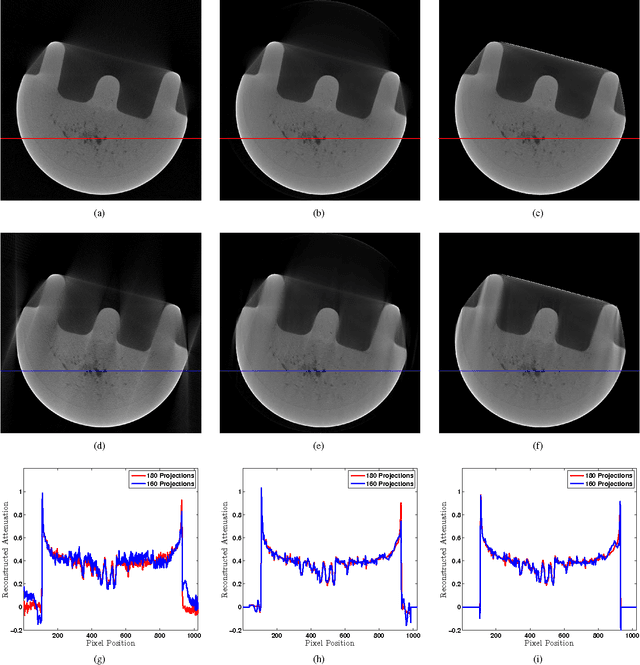
Abstract:We develop mask iterative hard thresholding algorithms (mask IHT and mask DORE) for sparse image reconstruction of objects with known contour. The measurements follow a noisy underdetermined linear model common in the compressive sampling literature. Assuming that the contour of the object that we wish to reconstruct is known and that the signal outside the contour is zero, we formulate a constrained residual squared error minimization problem that incorporates both the geometric information (i.e. the knowledge of the object's contour) and the signal sparsity constraint. We first introduce a mask IHT method that aims at solving this minimization problem and guarantees monotonically non-increasing residual squared error for a given signal sparsity level. We then propose a double overrelaxation scheme for accelerating the convergence of the mask IHT algorithm. We also apply convex mask reconstruction approaches that employ a convex relaxation of the signal sparsity constraint. In X-ray computed tomography (CT), we propose an automatic scheme for extracting the convex hull of the inspected object from the measured sinograms; the obtained convex hull is used to capture the object contour information. We compare the proposed mask reconstruction schemes with the existing large-scale sparse signal reconstruction methods via numerical simulations and demonstrate that, by exploiting both the geometric contour information of the underlying image and sparsity of its wavelet coefficients, we can reconstruct this image using a significantly smaller number of measurements than the existing methods.
 Add to Chrome
Add to Chrome Add to Firefox
Add to Firefox Add to Edge
Add to Edge